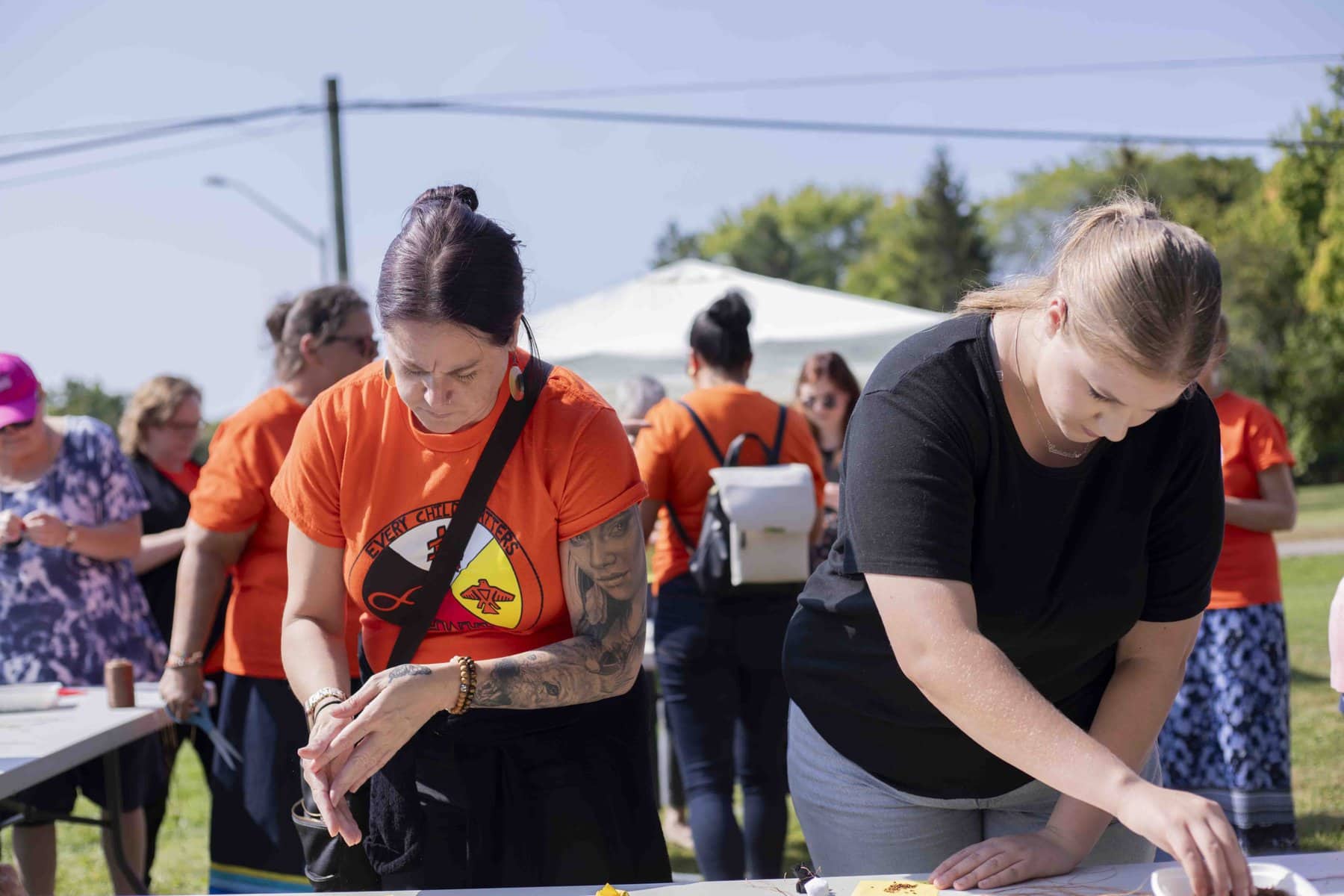Jamie-Lynn Gillingham says that every Indigenous person you meet has been touched by the Canadian residential school system in some way: either they’re a survivor, or they are descended from someone who survived them.
For Gillingham, an Anishinaabe artist, one descendant she’s carrying in her heart as the National Day of Truth and Reconciliation on Saturday draws near is her grandmother, Gladys Johnson.
“Everything we do is for my grandmother in her memory,” Gillingham said at the RiverBrink Art Museum last Friday, where she was teaching attendees about Indigenous cultural practices.
Truth and Reconciliation Day, which became a federal holiday two years ago, honours the First Nations, Métis and Inuit people who survived the Canadian Indian residential school system, which lasted for more than 160 years.
Museum administrator Janet Zylstra said that with Truth and Reconciliation Day coming up on Sept. 30, it was a good opportunity to feature Gillingham in a a day of workshops educating people about Indigenous culture.
Gillingham, whose name in Anishinaabemowin is Diindiisi Kwe (or Bluejay Woman), specializes in beadwork, jewelry, leatherwork and medicine pouches.
When The Lake Report arrived, Gillingham was teaching a small crowd how to bundle the four sacred medicines: tobacco, cedar, sage and sweetgrass.
Ellen Smith and Tracey Chen, both from Niagara Falls, were there and learning how to bundle medicine.
They both said they were interested in learning more about the Indigenous community.
Chen said it “really touched my heart,” when Gillingham spoke during the morning smudging ceremony.
Chauntel Nelles was there with her daughter Cassandra Cooper, both of whom are Algonquin.
The two were there observing Truth and Reconciliation Day and thinking of those children who attended these residential schools primarily from the 1830s to the 1990s.
“We want to honour every single one of them,” Nelles said.
She said the “hard times and trauma” endured by Indigenous communities across Canada were “everywhere” she said.
The Canadian government set up the first residential school, the Mohawk Institute in Brantford, which began operating in 1831 and was not officially closed until 1970.
The last residential school in Canada wasn’t closed until 1996.
Over the course of their history, residential schools were used to systematically assimilate Indigenous children into white, settler-colonial society and culture.
The Truth and Reconciliation Commission of Canada described child neglect in the schools as “institutionalized” in its final report in 2015.
“Many children were fed a substandard diet and given a substandard education,” it said.
“The lack of supervision created situations where students were prey to sexual and physical abusers,” it said.
These conditions resulted in high death rates among the children.
Those who died continue to be discovered in mass graves on the grounds of the old schools.
“My grandmother was forcibly taken from her home, from her family,” Gillingham said.
Gillingham said her grandmother was raped and abused in residential school.
The purpose of Truth and Reconciliation Day is to remembers stories like her grandmother’s, she said.
“But one day isn’t enough to really, really acknowledge what truly is happening,” she added.
Children were forbidden from speaking their native languages at these schools, and often punished if they did so. Many lost their connections to their families and their traditional ways of life.
There is now a “gap,” Gillingham says, between many Indigenous people and their culture.
Gillingham said not all people in the community know the customs and practices of their own culture.
While she began learning about her culture from a young age, it was kept quiet and she was bullied a lot at school for being Indigenous.
“It’s okay now,” she said.
“I’m strong enough resilience enough to take back what is rightfully ours,” she said.









